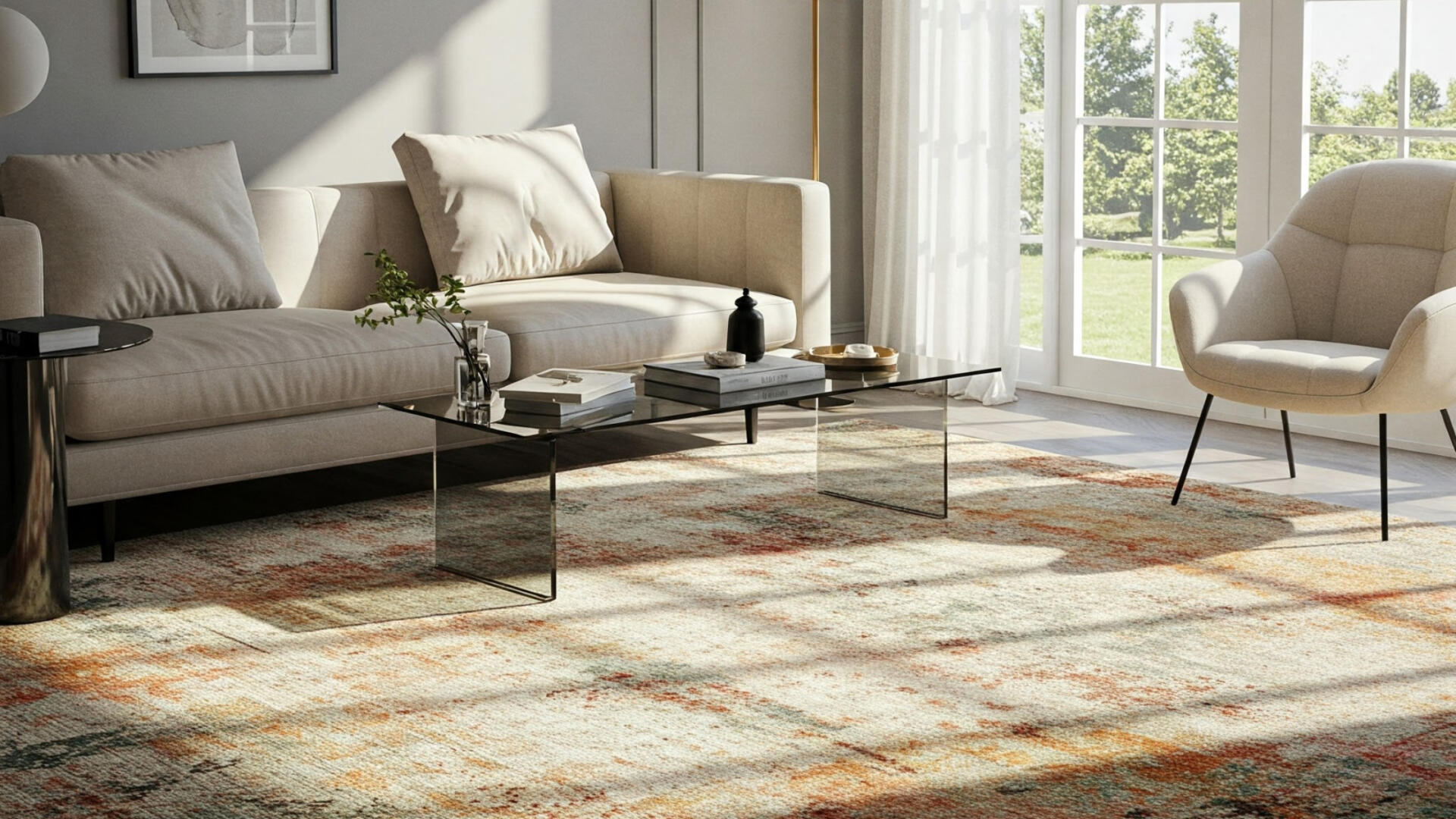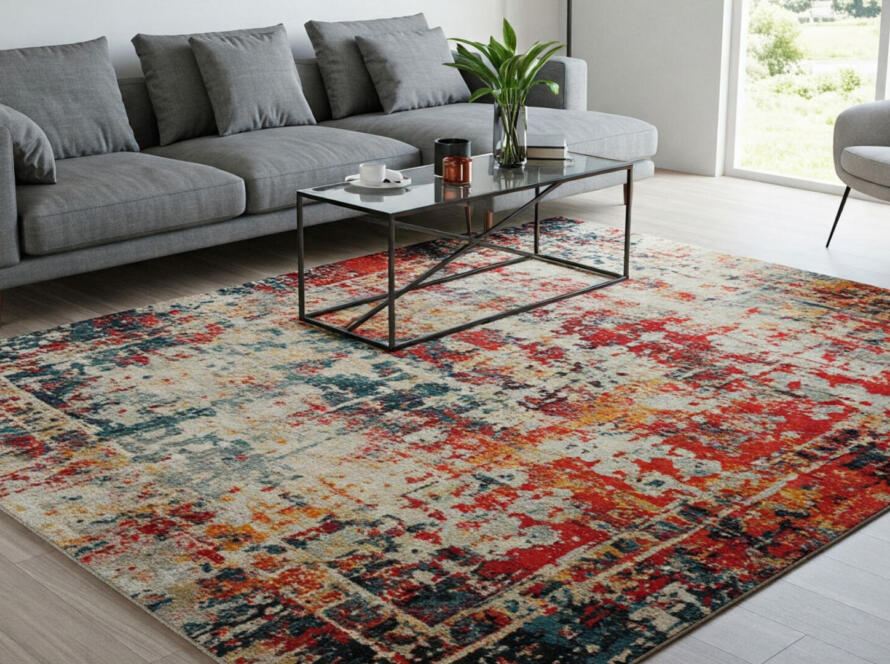A carpet is a piece of art, a story woven with threads of history, skill and dedication. Every carpet has a soul, shaped by the hands of skilled artisans who bring their passion to every step of the process. From raw fibres to a masterpiece of intricate patterns, the making of a carpet is a journey of patience, precision and artistic expression.
Selecting the Raw Materials
The foundation of a high quality carpet begins with choosing the right materials. Wool, silk, cotton and jute are among the most common fibres used in carpet making. Cotton is generally used as a backing material with wool and silk used for the surface.
The choice of material affects the texture, durability and overall aesthetic of the finished piece. Wool is widely preferred for its softness and resilience, while silk adds a luxurious sheen. We source the finest natural fibres, ensuring that our carpets look exquisite and also last for a long time. The raw materials are carefully inspected for quality before moving on to the next stage.
Thread Looming
Once the fibres are selected, they are converted into yarn through a process called looming. In this stage, the raw fibres are spun into threads using traditional handlooms or mechanical spinning wheels. The looming process determines the thickness and strength of the yarn, which in turn influences the durability of the final carpet.
Artisans spend hours perfecting the spun yarn, ensuring consistency in texture and strength. This stage requires immense skill and experience, as even minor inconsistencies can affect the final weave.

Dyeing
Infusing Colour and Life
The next step is dyeing, where the threads are infused with beautiful, vibrant and lasting colours. Natural dyes derived from plants, flowers and minerals have been used for centuries, lending a unique depth and richness to each hue. Chemical dyes are also used in some cases for their precision and durability.
Our artisans meticulously soak the yarn in dye baths, allowing the fibres to absorb colours gradually. The process requires patience, as achieving the perfect shade often involves multiple rounds of dipping and drying. The dyed threads are then left to dry naturally under the sun, ensuring an even colour distribution and a stunning finish.
Drying
Setting the Colour
Once the yarn is dyed, it must be thoroughly dried before it can be used for weaving. This is a crucial step, as damp threads can lead to colour bleeding and weaken the fibre structure. The drying process is carried out in open-air spaces or temperature-controlled rooms, depending on the weather conditions.
Artisans carefully monitor the drying process, making sure the colours remain consistent and vibrant. The patience involved in this stage is a testament to the dedication of our craftsmen, who ensure that every thread is perfect before moving forward.
Spinning
Spinning is a process that refines and strengthens the yarn before it is woven into a carpet. This involves twisting the dyed fibres together to create a uniform thickness and texture. Hand-spun yarns add an artisanal touch, lending slight variations that make each carpet unique.
Spinning requires precision and an expert eye for detail. The threads must be neither too tight nor too loose, as this affects the overall quality and feel of the finished carpet. Once the yarn has been spun to perfection, it is ready for the most intricate stage: weaving.
Weaving
The Heart of Carpet Making
Weaving is where most of the magic happens. This stage transforms simple threads into an intricate, breathtaking design. The weaving process varies depending on the type of carpet being made. The most common methods include hand-knotting, hand-tufting and flat weaving.

Hand knotting is considered the most prestigious and time-intensive technique. Hand knotting involves tying individual knots onto a loom. The density of knots per square inch determines the quality and detail of the design.
Hand tufting is a method that involves pushing the yarn through a fabric base using a tufting gun. It is a faster process but still requires artistic precision.
Flat weaving, also known as kilim weaving, is a technique that creates lightweight and reversible rugs using interwoven threads rather than knots.
Our artisans use traditional looms, carefully following intricate patterns passed down through generations. Each knot, loop and weave contributes to a stunning final masterpiece, making every carpet a work of art. We also specialise in hand tufting and flat weave, producing different varieties of carpets.
Cutting
Once the carpet is woven, it is removed from the loom and carefully trimmed to refine its shape. The cutting process ensures that the design remains sharp and symmetrical, with crisp edges and a smooth surface. Skilled artisans use specialised shears to trim excess fibres and define intricate motifs.
This stage also involves carving details into the carpet, enhancing its texture and depth. In high-pile carpets, certain areas may be cut deeper than others to create a three-dimensional effect, adding to the visual appeal.
Washing
After weeks or even months of meticulous work, the carpet undergoes a final wash to remove any impurities and set the fibres in place. Washing is done using gentle detergents and large quantities of water. It serves multiple purposes including softening of the fibres to enhance comfort, removal of excess dye to prevent colour bleeding and to bring out the true brilliance of the design.
The washing process must be handled with care, as excessive moisture can damage the fibres. Once washed, the carpet is carefully dried under controlled conditions to retain its shape and texture.
Finishing
Bringing the Masterpiece to Life
The final stage involves a thorough quality check and finishing touches. Artisans inspect every inch of the carpet, ensuring there are no flaws or loose threads. The edges are reinforced, and any minor imperfections are corrected.
Finally, the carpet is brushed and polished to bring out its natural sheen, making it ready to adorn homes with elegance and warmth. Each finished piece carries the signature touch of its maker, embodying the heart and soul of our craftsmanship.

At Kalinkaari, we celebrate the artisans behind each carpet. These skilled craftsmen and craftswomen dedicate their lives to preserving age-old traditions, passing down their expertise through generations. Their hands tell stories of patience, creativity and unwavering dedication. Each carpet is a blend of heritage, skill and artistic passion.
The making of a carpet is not just a mechanical process. It is an art form that bridges generations. From selecting the finest materials to weaving intricate patterns and adding finishing touches, every step involves immense skill and dedication. We take pride in preserving this timeless art, ensuring that each carpet we create carries the legacy of craftsmanship and tradition. When you step onto a Kalinkaari carpet, you step into a story. A tale of passion, perseverance and unparalleled artistry.




